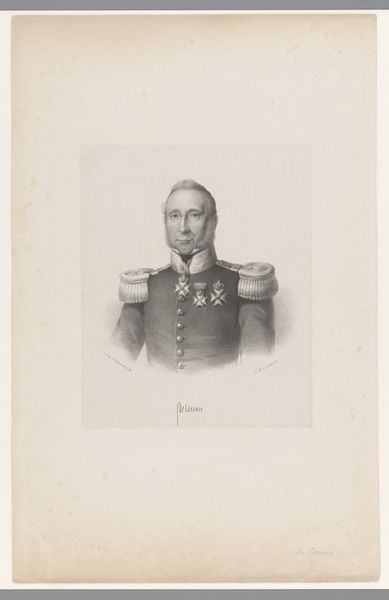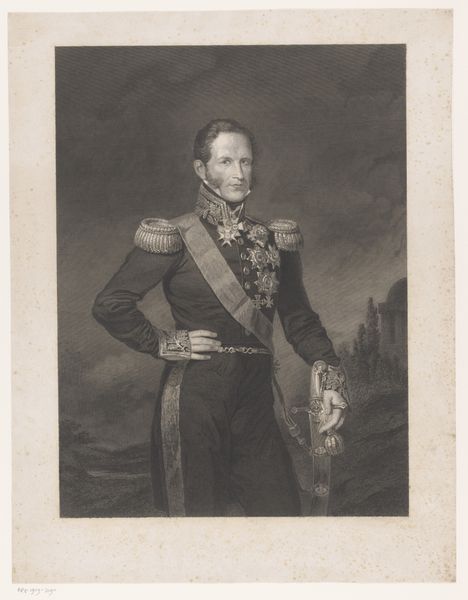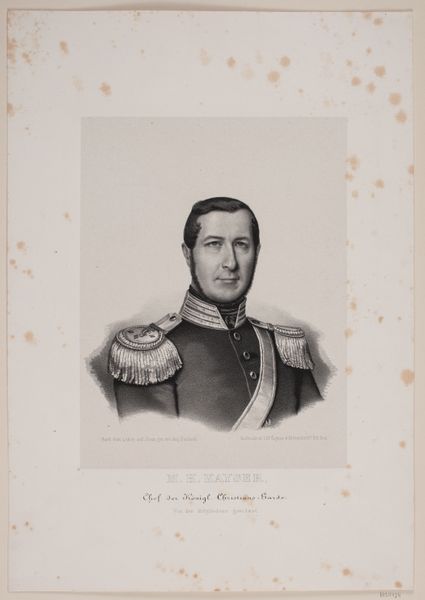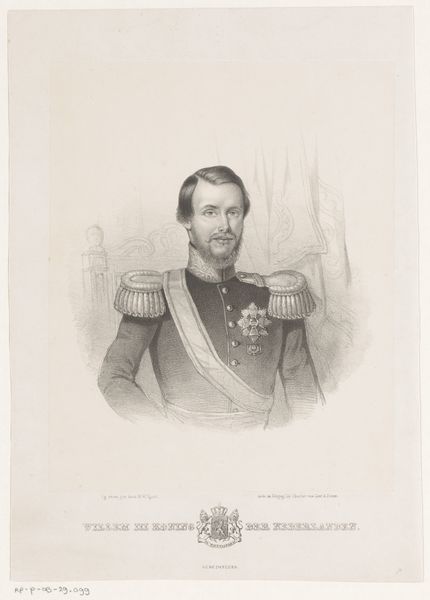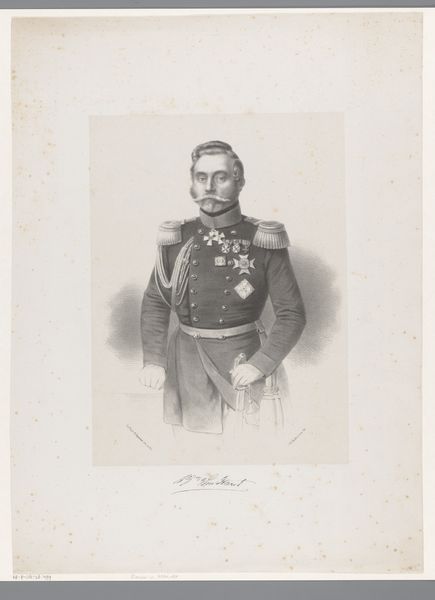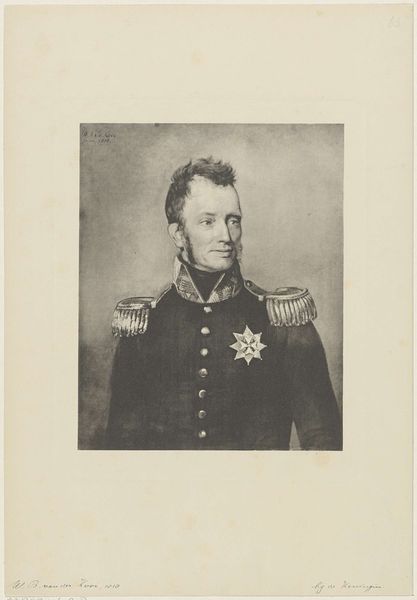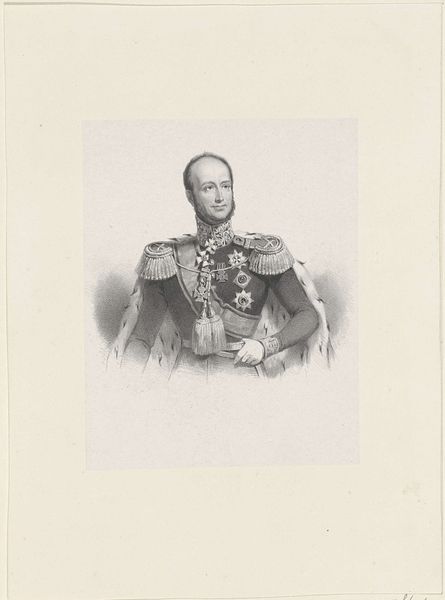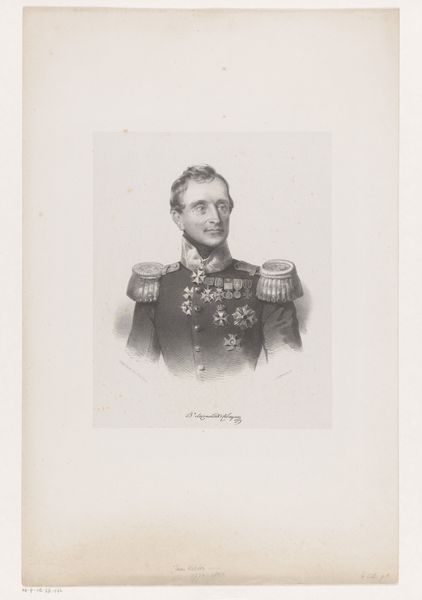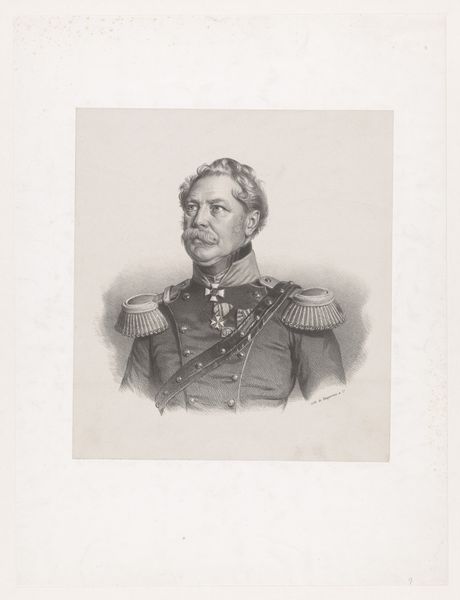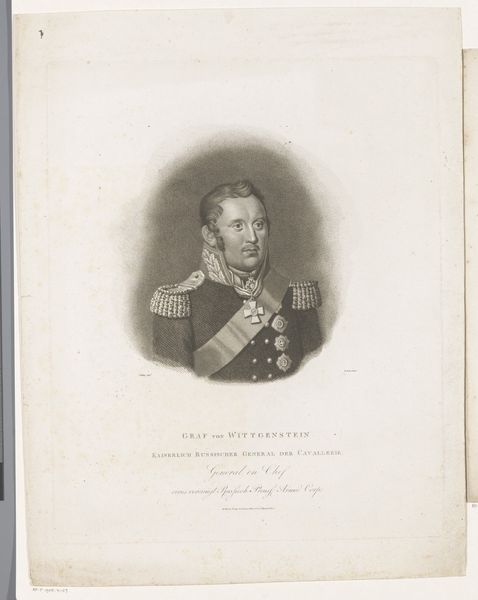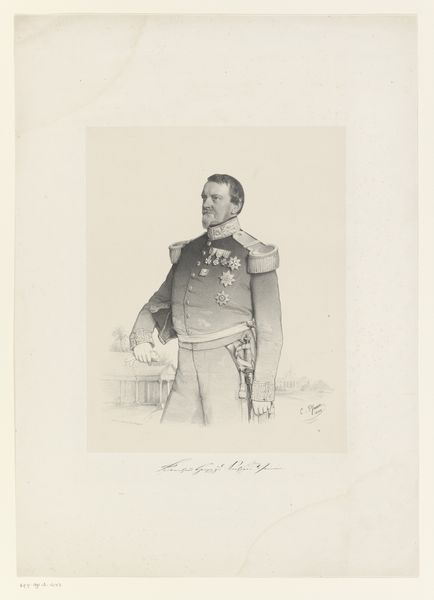
photography, gelatin-silver-print
#
portrait
#
neoclacissism
#
photography
#
historical photography
#
gelatin-silver-print
#
history-painting
Dimensions: height 566 mm, width 420 mm
Copyright: Rijks Museum: Open Domain
This portrait, possibly of Nicolaus prince of Pruisen, was made with a lithographic stone by Carl Wildt. Lithography involves drawing with a greasy crayon onto a flat slab of limestone, treating it with acid, then inking the stone and using it to print multiple images. Look closely, and you can see the subtle gradations of tone and texture achieved through this process. The density of the black ink varies, creating depth and volume in the figure's face and uniform. Lithography was a relatively new technology at the time, enabling the mass production of images and making art more accessible to a wider audience. Consider the labor involved: from quarrying and preparing the limestone, to the skilled hand of the artist drawing on the stone, to the printing process itself. This work reflects the increasing industrialization of art in the 19th century. Appreciating the means of production allows us to understand the social and cultural context in which this portrait was created. It challenges any strict division between fine art and more commercial printmaking practices.
Comments
No comments
Be the first to comment and join the conversation on the ultimate creative platform.
